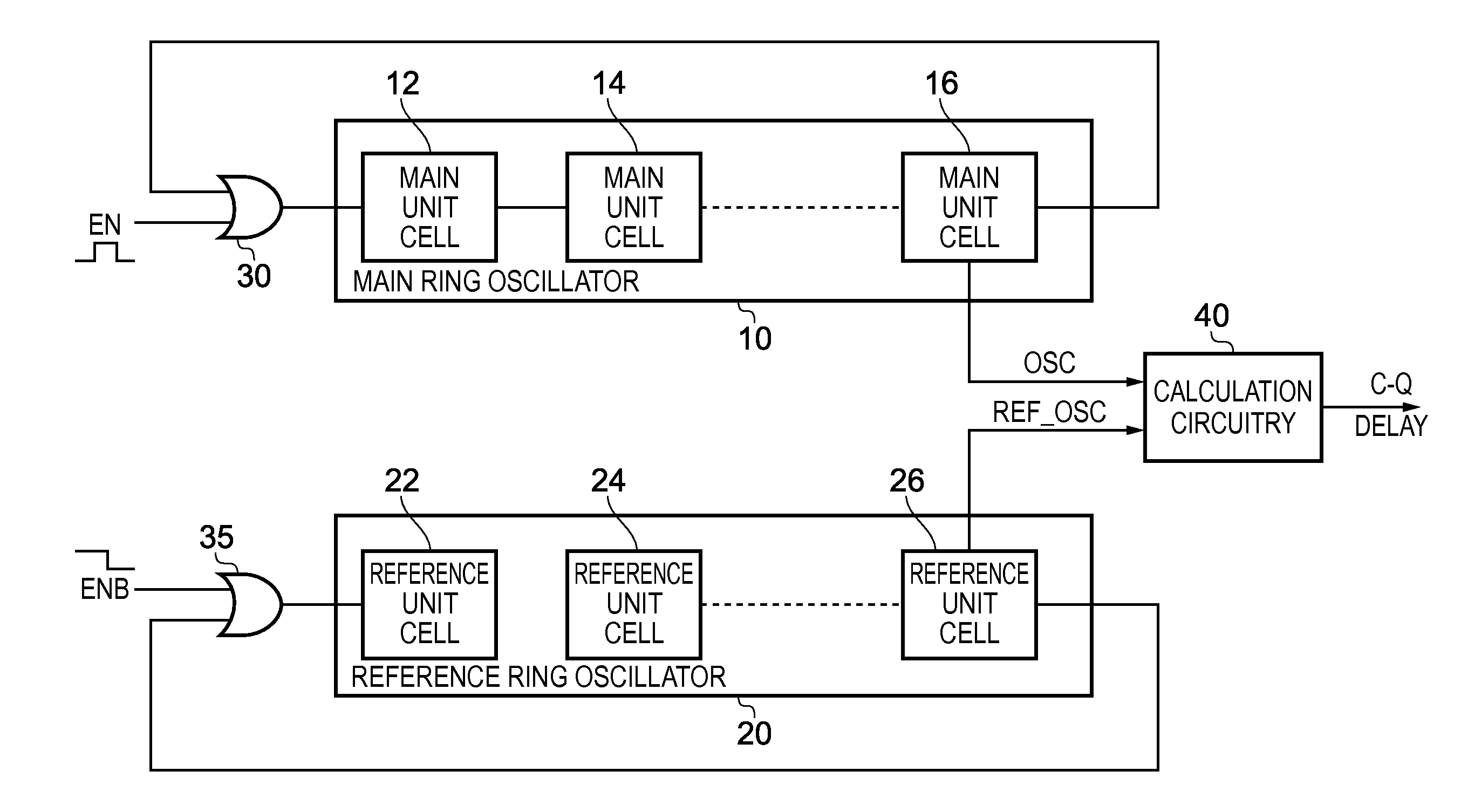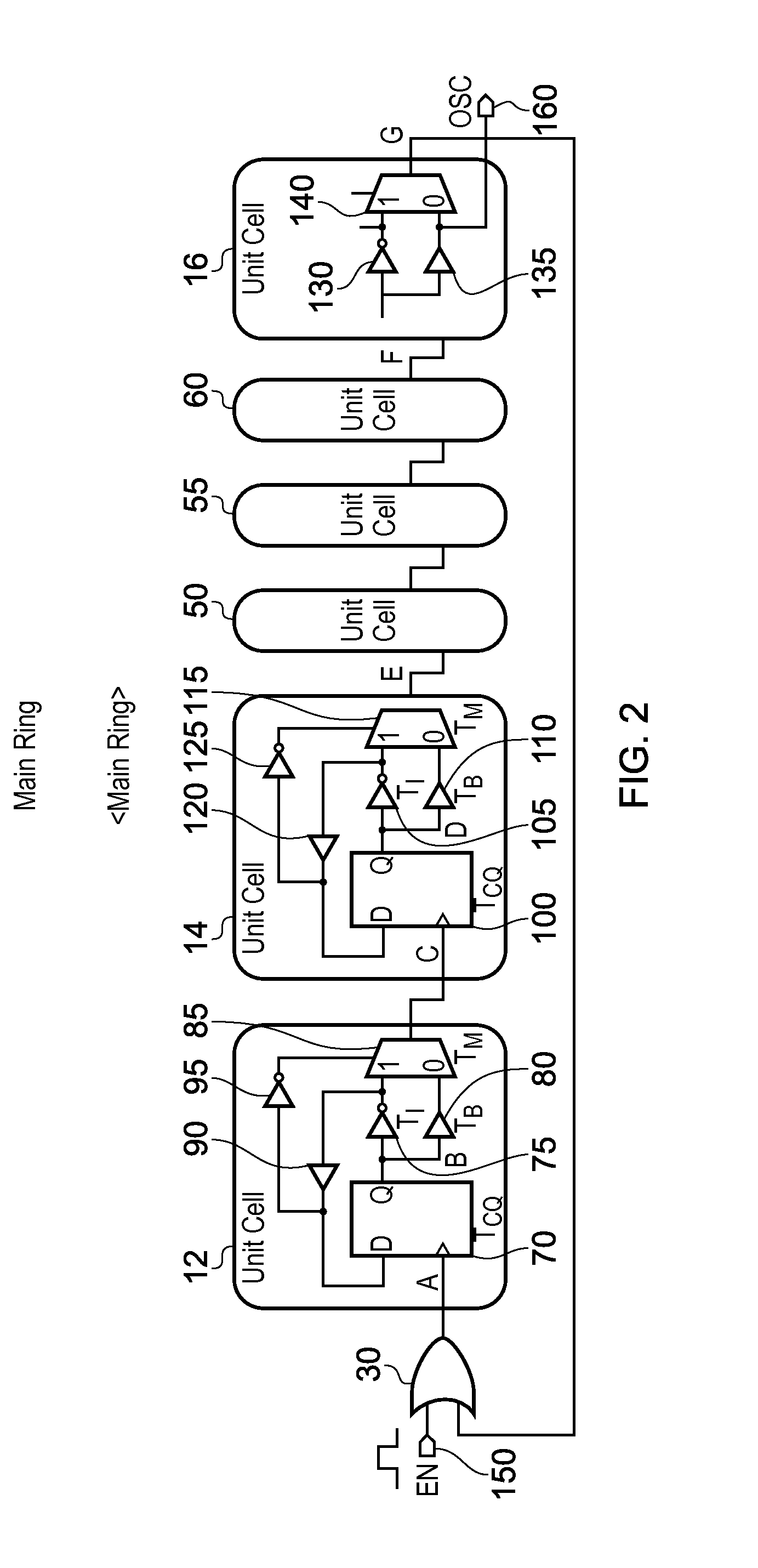Measurement circuitry and method for measuring a clock node to output node delay of a flip-flop
a clock node and measurement circuit technology, applied in the direction of pulse characteristics measurement, pulse technique, instruments, etc., can solve the problems of not providing any mechanism for compensating for mismatches, no way to compensate mismatch errors, and complex known techniques for measuring the clock to output node delay (hereafter referred to as c-q delay). , to achieve the effect of simple and effective mechanism, easy placement and routing
- Summary
- Abstract
- Description
- Claims
- Application Information
AI Technical Summary
Benefits of technology
Problems solved by technology
Method used
Image
Examples
Embodiment Construction
[0036]FIG. 1 is a block diagram schematically illustrating measurement circuitry in accordance with one embodiment. The measurement circuitry comprises a main ring oscillator 10 and a reference ring oscillator 20. The main ring oscillator 10 includes a plurality of main unit cells 12, 14, 16, and similarly the reference ring oscillator 20 includes a plurality of reference unit cells 22, 24, 26. The reference ring oscillator in the embodiment of FIG. 1 is arranged to have the same number of reference unit cells as the number of main unit cells provided in the main ring oscillator. That number can vary dependent on embodiments, but in one embodiment that number N is equal to 4n+2, where n is a positive integer. In one particular embodiment, it has been found that this formulation of N is a requirement to make the reference ring oscillate correctly. However, in other implementations such a restriction may not be required.
[0037]At initialisation time, both the main ring oscillator and t...
PUM
 Login to View More
Login to View More Abstract
Description
Claims
Application Information
 Login to View More
Login to View More - R&D
- Intellectual Property
- Life Sciences
- Materials
- Tech Scout
- Unparalleled Data Quality
- Higher Quality Content
- 60% Fewer Hallucinations
Browse by: Latest US Patents, China's latest patents, Technical Efficacy Thesaurus, Application Domain, Technology Topic, Popular Technical Reports.
© 2025 PatSnap. All rights reserved.Legal|Privacy policy|Modern Slavery Act Transparency Statement|Sitemap|About US| Contact US: help@patsnap.com



